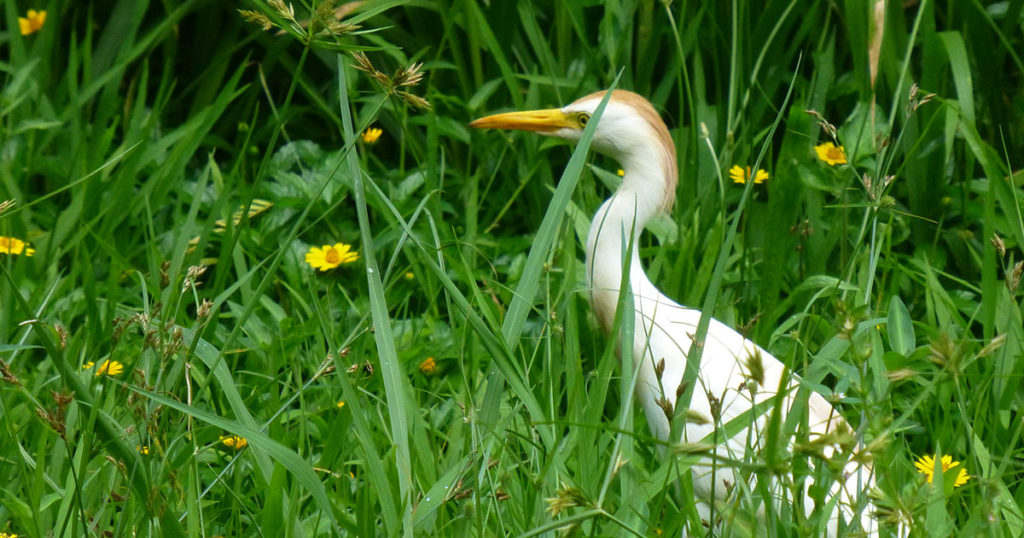
No noise alerted me. Not the thrashing or thumping from a scuffle, no squawks or screams of anger, pain, or fear. So when I happened to look out the living room glass doors and saw the dogs sniffing around, I only wondered why they were there instead of at the front of the house near the gate where they usually hang out, warming themselves in the early spring sunshine while waiting for something to come along the lane worth rousing themselves for. But here they were, busy on the shady side. Good ol’ dogs. I went to the door to open it and say hello.
As I got closer, I saw a white object on the grass beyond the dogs, about 10 feet away. A towel from the line, a T-shirt, a plastic bag? Whatever it was, it appeared to be not bunched up but flung out. I yanked open the door and stepped out.
Immediately I realized the dogs were not oblivious to the white thing but assessing it. How did I know? Something about the way they skirted the object while coming over to me told me they were keeping tabs on it, whatever it was. My eyes on the dogs, I stepped closer, ready to lunge for them if they broke for the creature, because now I could see it was alive and alert—it had a presence. Then I was beside it. It was a bird, a large one, snowy white, reclining oddly, legs to one side, head up, shoulder hunched. It had a long yellow beak like a pair if scissors. I wished I had a towel to grab the bird with, but I couldn’t leave it alone with the dogs for even a moment to run for one. I’d never seen them not interested in something that moves, be it lizard, mouse, or bumble bee.
If you grab a snake close to the head, it can’t strike you, and I thought if I seized this bird high on the back, it couldn’t skewer me with that long, pointed beak. Where, I wondered even as I lifted the bird in my arms, was the number for the animal protection service and would someone come on a holiday? I’d called the service in the past to come for an injured animal. But this bird didn’t seem to have a broken wing, and it didn’t mind being held. It panted a bit and looked around. I carried it toward a corner of the yard where the dogs can’t get, wondering if those long gray toes would grip a chair back or a low branch while the bird recovered its wits. Perhaps it would perch on the edge of the low stone wall, I thought, making for it. Something about the wall, the blossoming gardenia beside it in a pot, the buds forming on the nearby rose bushes, and the spruce green ornamental table, begged for the addition of the striking, white-plumed bird, as if for a still life. In Spanish, the word is bodegón or naturaleza muerta, even when it’s a vase of flowers or an apple, and not the brace of partridges hanging by their trussed legs from the back of a chair. My bird was very much alive. I thought it might attempt to shrug free of me, but as I made to set it down on the wall it did not squirm or stretch its legs or even seem to notice potential freedom in the form of a perch that might be a step toward flight.
Right then, with the bird still in my hands, I saw a drop of blood fall onto the stone where I’d thought to settle the bird. Holding it up and turning it slightly to look at its underside, I saw my fingers were spotted with blood. No gaping wound was visible, just a moist patch of feathers and the blood dribbling on my fingers. Could be from a dog’s tooth, I supposed, though the bird wasn’t wet or soggy, as it would be if mauled. A dog bite doesn’t have to be fatal.
I couldn’t leave the wounded bird outside, so I brought it in. In the bathroom I found a cloth to wrap it in, and I held the creature for a few minutes. I thought it might be a cattle egret, a kind of heron; I’d seen a dozen in the field next door, stalking in the grass alongside the cattle. I held a cup of water to it and even slopped some on the beak, but the bird didn’t appear to want a drink. It was probably startled by me, its first human being, as I was by it, my first snowy cattle egret. With a shiver I recalled Isaac Babel’s first goose. I would be very careful. The wound might just be a slight cut or a small puncture. A little rest and the bird might be fine. It might rejoin its flock in a nearby field, the wound proving to be just a scratch.
But it was more than that, and when I checked 10 minutes later, the bird had sunk into the soft bed I’d made for it in a box. It had slumped, turned its head, and I knew there was no life to this stillness. I buried the bird by the quince tree, under a low-hanging branch, all pink, white, and green with new blossoms and delicate leaves. Coming back to the house, I saw a feather, a single white feather on the new green grass, on the shady side of the house.

